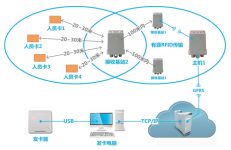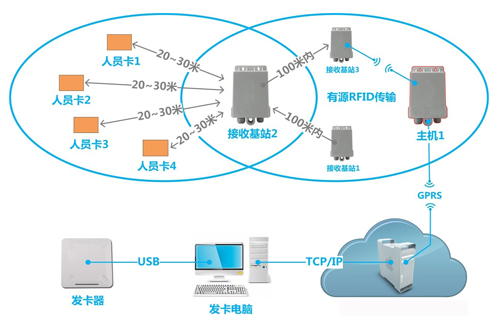
RFID area personnel location is more and more popular
[ad_1]
RFID is a communication technology that uses radio signals to identify specific targets and read and write related item data, and collects them in a non-contact manner. RFID can be read quickly and tracked for a long time, so it is highly favored in the field of intelligent identification and has a wide range of applications. The RFID personnel positioning system is to collect information from RFID electronic tags at a long distance and non-contact, so as to realize the automatic information identification of personnel in the mobile state, so that in the indoor and other specific area positioning technology, RFID technology positioning has been very effective. Big advantage.
Location service is a technology that is very popular and valued by people. At present, the well-known positioning service is GPS (Global Positioning System), as well as our country’s Beidou positioning system; and more and more other wireless network technologies have also begun to enter the field of positioning services, and RFID technology is used in the Internet of Things. Is widely used.
RFID intelligent positioning is a regional positioning system that uses the combination of 2.4G active and 125K low-frequency RFID technology to automatically identify people and objects and regionally locate them, so as to realize the management of people and objects, such as: personnel Attendance, personnel and item search, personnel and item area limitation, personnel statistics, video linkage, historical track query, key area management, etc.

Significance of RFID technology positioning system
1. Real-time supervision and management of personnel (real-time view of personnel location, number of personnel, personnel information in any room, personnel dynamic changes, personnel seeking help in emergencies, warning information about entering dangerous areas, etc.).
2. Take the initiative to give early warning, solve the problem of lagging accidents, expose hidden dangers in advance, and avoid accidents.
3. Sudden scenes reappear. The Internet of Things technology and the existing video linkage can check the scene in real time, providing a basis for the deployment of relevant personnel to solve the emergency in time.
4. Reduce the workload of staff management, reduce labor cost input, and improve work efficiency.
5. Promote the development of institutionalization, standardization, and real-time management of personnel, ensure personnel safety and stability, and lay a solid foundation for the gradual realization of intelligent and all-round supervision.
Components of RFID positioning system
The RFID positioning system is mainly composed of positioning tags, readers (base stations), low-frequency locators and positioning system software.
1. RFID-2.4GHz ceiling-mounted reader. (Also called reader and positioning AP) readers are divided into single frequency and dual frequency. The frequency of single frequency reader is 2.4G, and the frequency of dual frequency reader is divided into 2.4G and 125K. The reader is mainly responsible for The data is collected from the signal sent by the tag, uploaded to the positioning server, and installed in the positioning area.
2. RFID positioning tag. The positioning tag is a 2.4G and 125K dual-frequency semi-active RFID electronic tag. The positioning tag regularly sends out 2.4G signals and receives 125K activation signals. The tag has a built-in battery, which can be replaced. Because the power consumption of the tag is low, a battery of the personnel tag can be used for more than 1 year under normal conditions. Personnel positioning tags are available in wristband type and card type, and function buttons can be customized on the card type, which can be used for distress calls or location reporting functions.
3. Handheld reader. Also called a handheld terminal, it can receive the wireless signal sent by the positioning tag, and display simple information of the person wearing the tag on its own screen.
4. Low-frequency locator. The low-frequency activation antenna is connected to the low-frequency locator through a two-core shielded wire. The activation antenna is mainly installed in the entrance and exit area to assist in access judgment and positioning. The low-frequency activation antenna is divided into two types: ground-sensing coil antenna and rod antenna.
5. Network equipment
6. Computers and servers
RFID positioning system software
The RFID intelligent positioning system adopts cloud computing technology. Through the design of cloud computing, a large amount of data processing can be completed by multiple servers, avoiding the computational pressure caused by processing all data by a single server. The positioning system software consists of four Partial composition.
1. System core program: Mainly responsible for data management and receiving data sent from the data collection terminal, and compare, query, and count the data sent from the collection terminal.
2. Information collection program: It is mainly responsible for collecting the data of positioning tags and performing positioning calculations on the tags.
3. Display terminal program: Responsible for map display, personnel location display, alarm output, etc.
Backstage management: Responsible for equipment management, association of personnel and items with tags, file management of personnel and items, location area management, and various query statistics, etc.
In many fields of technology, RFID technology is currently a very important technology for security companies. RFID technology has many advantages such as fast scanning, small size, reusable, long-distance, penetrating, no barrier data automatic collection, large data memory capacity, strong anti-pollution ability and strong durability, making RFID technology fast The development and popularization of the industry in the field.
[ad_2]



